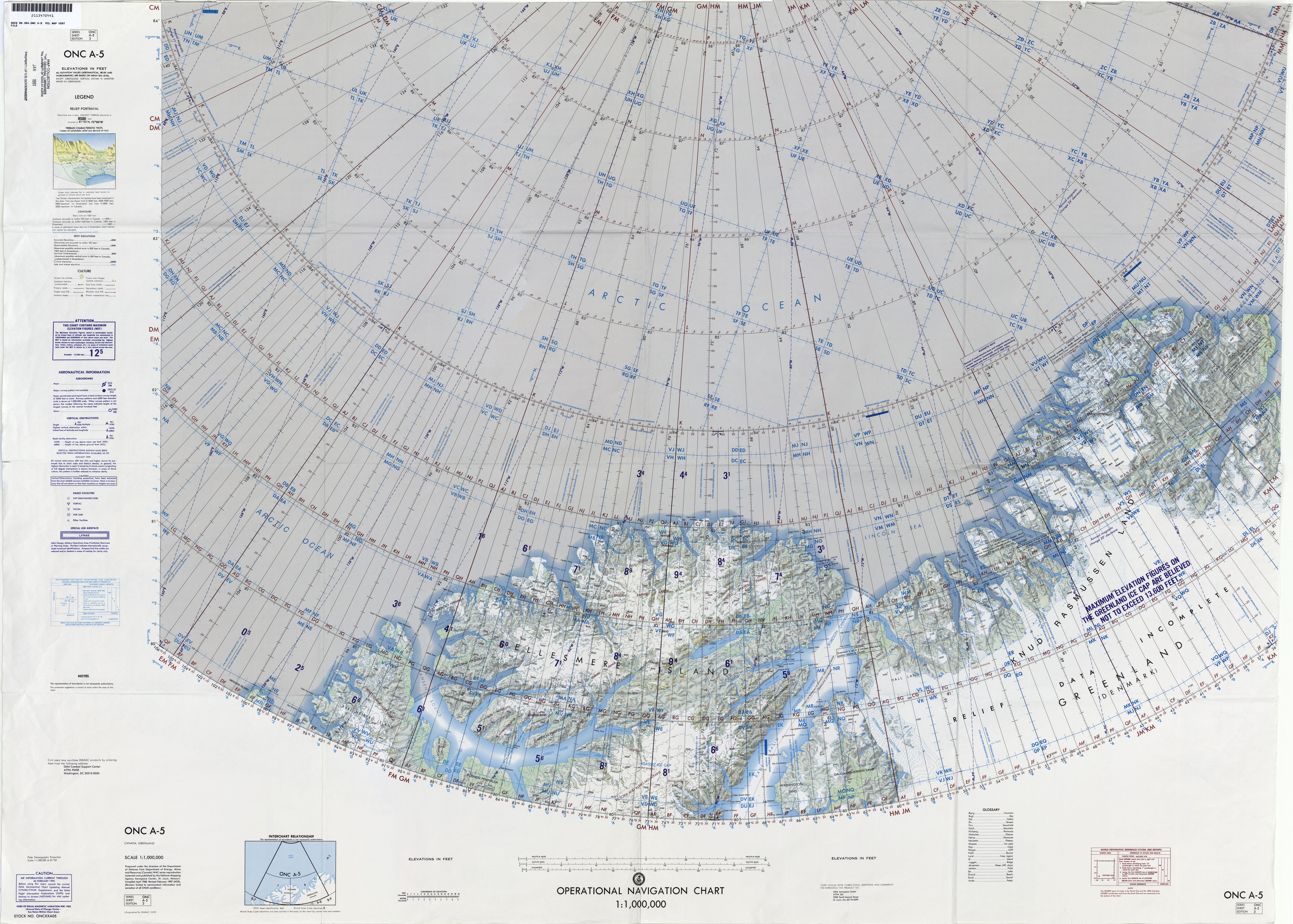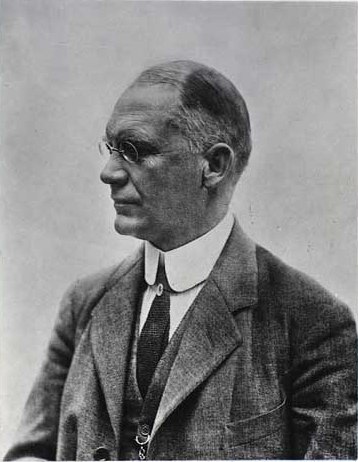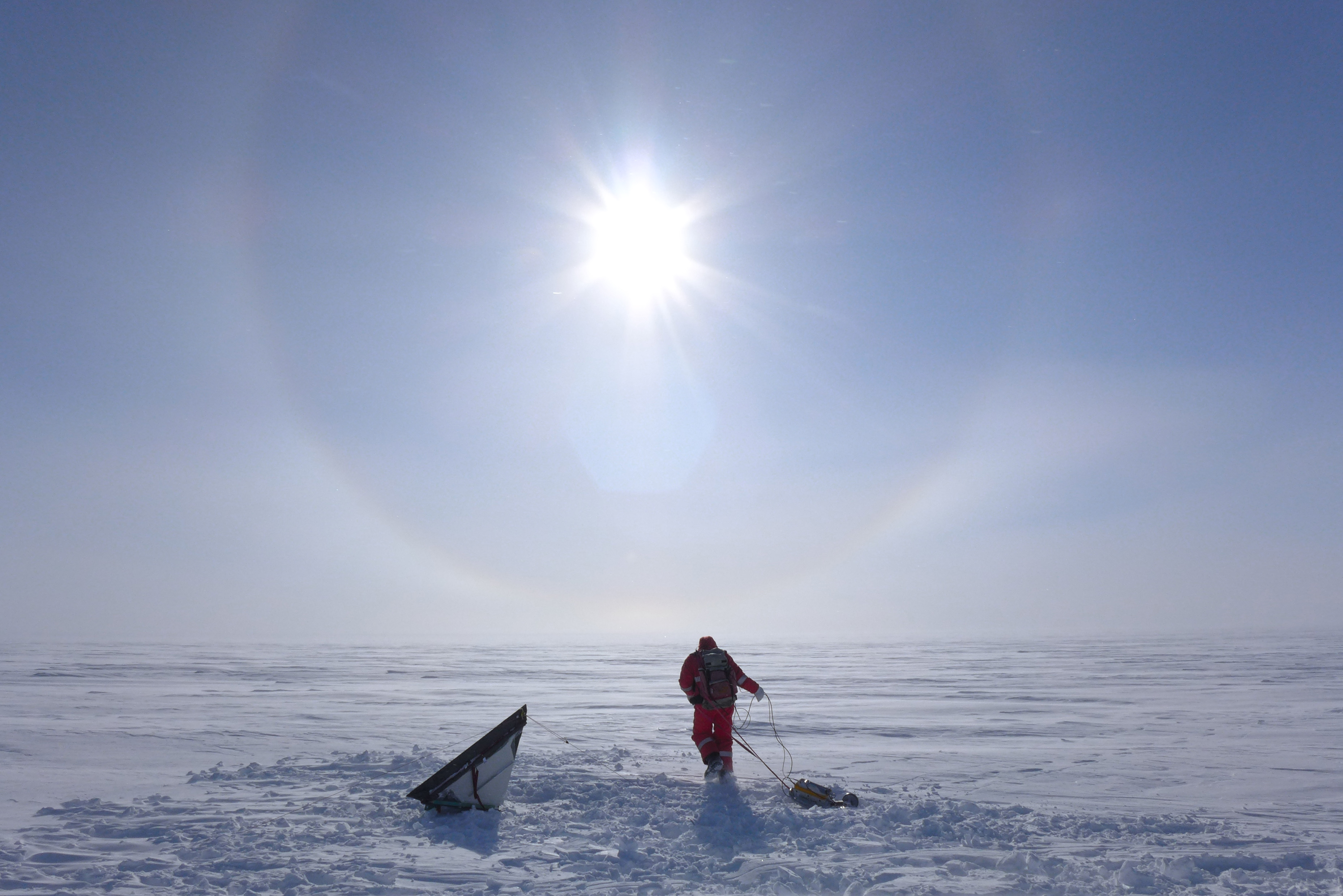|
C.H. Ostenfeld Glacier
C. H. Ostenfeld Glacier ( da, C. H. Ostenfeld Gletscher), is one of the major glaciers in northern Greenland. This glacier was first mapped by Lauge Koch in 1917 during Knud Rasmussen's 1916-1918 Second Thule Expedition to north Greenland and was named after Danish botanist Carl Hansen Ostenfeld (1873–1931), author of ''Flora of Greenland and its origin''. Geography The C. H. Ostenfeld Glacier originates in the Greenland Ice Cap. It is roughly southeast–northwest oriented and has its terminus at the head of Victoria Fjord. There are three nunataks near its terminus. The glacier's last stretch is a floating tongue within the fjord. The Brikkerne Glacier joins from the right near the head of the fjord.U.S. Geological Survey Professional Paper, Volume 1386, Part 3, figure 38 BibliographyAnthony K. Higgins, ''North Greenland Glacier Velocities and Calf Ice Production'' See also *List of glaciers in Greenland This is a list of glaciers in Greenland. Details on the size an ... [...More Info...] [...Related Items...] OR: [Wikipedia] [Google] [Baidu] |
Tidal Outlet Glacier
Glacier morphology, or the form a glacier takes, is influenced by temperature, precipitation, topography, and other factors. The goal of glacial morphology is to gain a better understanding of glaciated landscapes and the way they are shaped. Types of glaciers can range from massive ice sheets, such as the Greenland ice sheet, to small cirque glaciers found perched on mountain tops. Glaciers can be grouped into two main categories: * Ice flow is constrained by the underlying bedrock topography * Ice flow is unrestricted by surrounding topography Unconstrained Glaciers Ice sheets and ice caps Ice sheets and ice caps cover the largest areas of land in comparison to other glaciers, and their ice is unconstrained by the underlying topography. They are the largest glacial ice formations and hold the vast majority of the world's fresh water. Ice sheets Ice sheets are the largest form of glacial formation. They are continent sized ice masses that span areas over . They are dome ... [...More Info...] [...Related Items...] OR: [Wikipedia] [Google] [Baidu] |
Greenland
Greenland ( kl, Kalaallit Nunaat, ; da, Grønland, ) is an island country in North America that is part of the Kingdom of Denmark. It is located between the Arctic and Atlantic oceans, east of the Canadian Arctic Archipelago. Greenland is the world's largest island. It is one of three constituent countries that form the Kingdom of Denmark, along with Denmark and the Faroe Islands; the citizens of these countries are all citizens of Denmark and the European Union. Greenland's capital is Nuuk. Though a part of the continent of North America, Greenland has been politically and culturally associated with Europe (specifically Norway and Denmark, the colonial powers) for more than a millennium, beginning in 986.The Fate of Greenland's Vikings , by Dale Mackenzie Brown, ''Archaeological Institute of America ... [...More Info...] [...Related Items...] OR: [Wikipedia] [Google] [Baidu] |
Victoria Fjord
Victoria Fjord, also known as Victoria Inlet, is a large fjord in northern Greenland. Its eastern shore forms the western limit of Peary Land. Geography To the northwest the fjord opens into the Lincoln Sea of the Arctic Ocean. Wulff Land forms the western shore of the fjord. The C. H. Ostenfeld Glacier has its terminus at the head of the fjord. Islands Nares Land lies east of the fjord and a narrow sound between this island and the mainland connects inner Victoria Fjord with Nordenskiöld Fjord to the east. Stephenson Island is located at its northern end by its mouth. See also *List of fjords of Greenland *Peary Land Peary Land is a peninsula in northern Greenland, extending into the Arctic Ocean. It reaches from Victoria Fjord in the west to Independence Fjord in the south and southeast, and to the Arctic Ocean in the north, with Cape Morris Jesup, the nor ... References Fjords of Greenland {{Greenland-fjord-stub ... [...More Info...] [...Related Items...] OR: [Wikipedia] [Google] [Baidu] |
Lincoln Sea
Lincoln Sea (french: Mer de Lincoln; da, Lincolnhavet) is a body of water in the Arctic Ocean, stretching from Cape Columbia, Canada, in the west to Cape Morris Jesup, Greenland, in the east. The northern limit is defined as the great circle line between those two headlands. It is covered with sea ice throughout the year, the thickest sea ice in the Arctic Ocean, which can be up to thick. Water depths range from to . Water and ice from Lincoln Sea empty into Robeson Channel, the northernmost part of Nares Strait, most of the time. The sea was named after Robert Todd Lincoln, then United States Secretary of War, on Adolphus W. Greely's 1881–1884 Arctic expedition into Lady Franklin Bay. Alert, the northernmost station of Canada, is the only populated place on the shore of Lincoln Sea. The body of water to the east of Lincoln Sea (east of Cape Morris Jesup) is the Wandel Sea. Currents and Oceanic Circulation Because of the severe ice conditions that last year-round, ocean ... [...More Info...] [...Related Items...] OR: [Wikipedia] [Google] [Baidu] |
Glacier
A glacier (; ) is a persistent body of dense ice that is constantly moving under its own weight. A glacier forms where the accumulation of snow exceeds its ablation over many years, often centuries. It acquires distinguishing features, such as crevasses and seracs, as it slowly flows and deforms under stresses induced by its weight. As it moves, it abrades rock and debris from its substrate to create landforms such as cirques, moraines, or fjords. Although a glacier may flow into a body of water, it forms only on land and is distinct from the much thinner sea ice and lake ice that form on the surface of bodies of water. On Earth, 99% of glacial ice is contained within vast ice sheets (also known as "continental glaciers") in the polar regions, but glaciers may be found in mountain ranges on every continent other than the Australian mainland, including Oceania's high-latitude oceanic island countries such as New Zealand. Between latitudes 35°N and 35°S, glaciers occur ... [...More Info...] [...Related Items...] OR: [Wikipedia] [Google] [Baidu] |
Cartography
Cartography (; from grc, χάρτης , "papyrus, sheet of paper, map"; and , "write") is the study and practice of making and using maps. Combining science, aesthetics and technique, cartography builds on the premise that reality (or an imagined reality) can be modeled in ways that communicate spatial information effectively. The fundamental objectives of traditional cartography are to: * Set the map's agenda and select traits of the object to be mapped. This is the concern of map editing. Traits may be physical, such as roads or land masses, or may be abstract, such as toponyms or political boundaries. * Represent the terrain of the mapped object on flat media. This is the concern of map projections. * Eliminate characteristics of the mapped object that are not relevant to the map's purpose. This is the concern of generalization. * Reduce the complexity of the characteristics that will be mapped. This is also the concern of generalization. * Orchestrate the elements ... [...More Info...] [...Related Items...] OR: [Wikipedia] [Google] [Baidu] |
Lauge Koch
Lauge Koch (5 July 1892 – 5 June 1964) was a Danish geologist and Arctic explorer. Biography Lauge Koch was born in 1892 to Karl and Elisabeth Koch. His development as a scientist was greatly influenced by his father's second cousin Johan Peter Koch - a polar explorer, a member of several Greenland expeditions, including Ludvig Mylius-Erichsen's and Alfred Wegener's (in the latter's expedition (1912-1913) to cross Greenland, he led a sledging party). He received his higher education at the University of Copenhagen, where he began his studies in 1911, in 1920 he received a master's degree, and in 1929 a doctor's degree, having defended a dissertation on the topic "Stratigraphy of Greenland". General He was the renowned leader of 24 Danish government expeditions to Greenland, and the central character in the ''Lauge Koch Controversy'', an international and intra-national conflict. Beginning in December 1935 a bitter conflict arose between Koch and eleven of the most prominent ... [...More Info...] [...Related Items...] OR: [Wikipedia] [Google] [Baidu] |
Knud Rasmussen
Knud Johan Victor Rasmussen (; 7 June 1879 – 21 December 1933) was a Greenlandic–Danish polar explorer and anthropologist. He has been called the "father of Eskimology" (now often known as Inuit Studies or Greenlandic and Arctic Studies) and was the first European to cross the Northwest Passage via dog sled. He remains well known in Greenland, Denmark and among Canadian Inuit.Elizabeth Cruwys, 2003. Early years Rasmussen was born in Jakobshavn, Greenland, the son of a Danish missionary, the vicar Christian Rasmussen, and an Inuit–Danish mother, Lovise Rasmussen (née Fleischer). He had two siblings. Rasmussen spent his early years in Greenland among the Kalaallit where he learned to speak Kalaallisut, hunt, drive dog sleds and live in harsh Arctic conditions. "My playmates were native Greenlanders; from the earliest boyhood I played and worked with the hunters, so even the hardships of the most strenuous sledge-trips became pleasant routine for me." He was later ... [...More Info...] [...Related Items...] OR: [Wikipedia] [Google] [Baidu] |
Second Thule Expedition
The second (symbol: s) is the unit of time in the International System of Units (SI), historically defined as of a day – this factor derived from the division of the day first into 24 hours, then to 60 minutes and finally to 60 seconds each (24 × 60 × 60 = 86400). The current and formal definition in the International System of Units ( SI) is more precise:The second ..is defined by taking the fixed numerical value of the caesium frequency, Δ''ν''Cs, the unperturbed ground-state hyperfine transition frequency of the caesium 133 atom, to be when expressed in the unit Hz, which is equal to s−1. This current definition was adopted in 1967 when it became feasible to define the second based on fundamental properties of nature with caesium clocks. Because the speed of Earth's rotation varies and is slowing ever so slightly, a leap second is added at irregular intervals to civil time to keep clocks in sync with Earth's rotation. Uses Analog clocks and watches often have ... [...More Info...] [...Related Items...] OR: [Wikipedia] [Google] [Baidu] |
Carl Hansen Ostenfeld
Carl Emil Hansen Ostenfeld (born Carl Emil Ostenfeld-Hansen) (3 August 1873 – 16 January 1931) was a Danish systematic botanist. He graduated from the University of Copenhagen under professor Eugenius Warming. He was a keeper at the Botanical Museum 1900–1918, when he became professor of botany at the Royal Veterinary and Agricultural University. In 1923, by the early retirement of Raunkiær's, Ostenfeld became professor of botany at the University of Copenhagen and director of the Copenhagen Botanical Garden, both positions held until his death in 1931. He was a member of the Royal Danish Academy of Sciences and Letters and served on the board of directors of the Carlsberg Foundation. Ostenfeld is known as an explorer of the Danish flora, including marine plankton, as well as the flora of Western Australia. Ostenfeld participated in the Ingolf expedition (1885-86) to the waters around Iceland and Greenland, and in 1911 in the International Phytogeographic ... [...More Info...] [...Related Items...] OR: [Wikipedia] [Google] [Baidu] |
Greenland Ice Cap
The Greenland ice sheet ( da, Grønlands indlandsis, kl, Sermersuaq) is a vast body of ice covering , roughly near 80% of the surface of Greenland. It is sometimes referred to as an ice cap, or under the term ''inland ice'', or its Danish equivalent, ''indlandsis''. An acronym, GIS, is frequently used in the scientific literature. It is the second largest ice body in the world, after the Antarctic ice sheet. The ice sheet is almost long in a north–south direction, and its greatest width is at a latitude of 77°N, near its northern margin. The average thickness is about and over at its thickest point. In addition to the large ice sheet, smaller ice caps (such as Maniitsoq and Flade Isblink) as well as glaciers, cover between around the periphery. The Greenland ice sheet is adversely affected by climate change. It is more vulnerable to climate change than the Antarctic ice sheet because of its position in the Arctic, where it is subject to the regional amplification of ... [...More Info...] [...Related Items...] OR: [Wikipedia] [Google] [Baidu] |
Nunatak
A nunatak (from Inuit ''nunataq'') is the summit or ridge of a mountain that protrudes from an ice field or glacier that otherwise covers most of the mountain or ridge. They are also called glacial islands. Examples are natural pyramidal peaks. When rounded by glacial action, smaller rock promontories may be referred to as rognons. The word is of Greenlandic origin and has been used in English since the 1870s. Description The term is typically used in areas where a permanent ice sheet is present and the nunataks protrude above the sheet.J. J. Zeeberg, ''Climate and Glacial History of the Novaya Zemlya Archipelago, Russian Arctic''. pp. 82–84 Nunataks present readily identifiable landmark reference points in glaciers or ice caps and are often named. While some nunataks are isolated, sometimes they form dense clusters, such as Queen Louise Land in Greenland. Nunataks are generally angular and jagged, which hampers the formation of glacial ice on their tops, although snow c ... [...More Info...] [...Related Items...] OR: [Wikipedia] [Google] [Baidu] |






